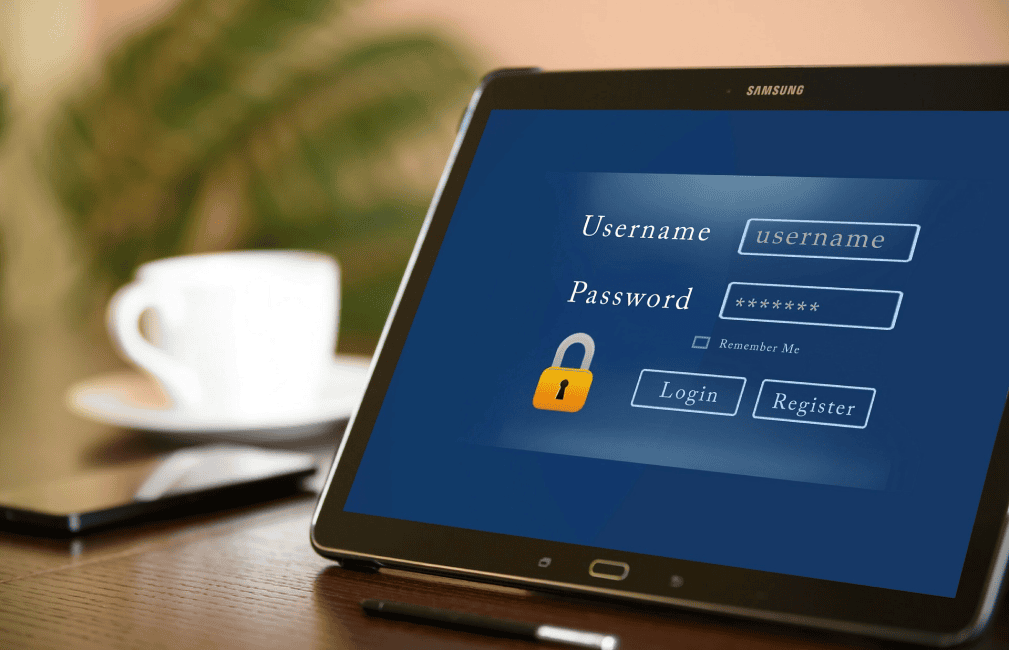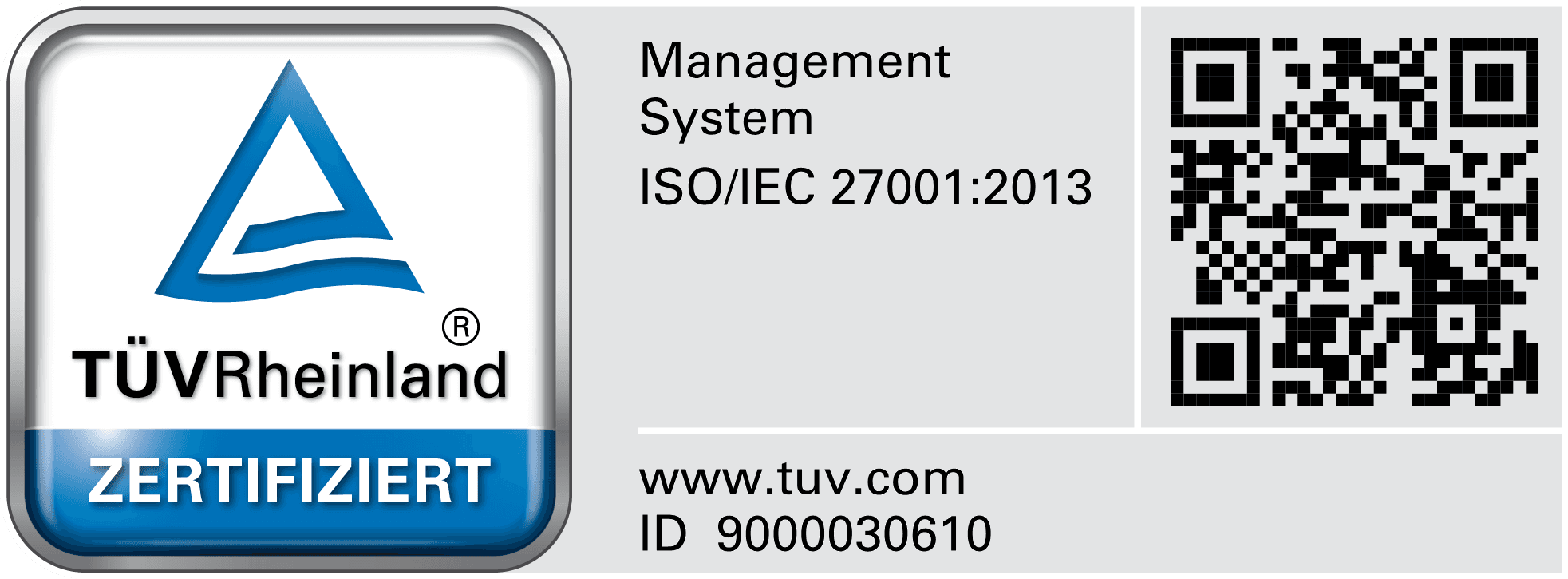[Blog post]
Password manager vs. single sign-on: finding the right solution
The advantages and disadvantages of the two tools in terms of secure login processes and user-friendliness.
1. February 2023


In the digital world, data security and cybersecurity are more important than ever. The increasing number of cyber attacks makes it essential to protect private and business online identities. One of the most important measures here is the use of secure passwords. However, it is often difficult to remember and regularly change many different passwords. Moreover, from an enterprise perspective, it is almost impossible to verify and ensure password security for all employees. To ensure that secure and different passwords are used, there are various tools on the market, especially password managers and single sign-on solutions. In the following, we will look at these solutions in detail and show which is the best choice to ensure secure login processes.
How it works, advantages and challenges of using a password manager tool.
Password managers are digital tools that allow users to store all their passwords in one secure location. The way a password manager works is relatively simple, the user just needs to set a master password for the manager and add all the other passwords for the different accounts and applications, which he needs in his professional life. Then he can log in to all his applications with the different stored passwords, without having to remember the password every time.
Password managers are a handy tool and offer a number of benefits to users:
-
Higher password security: Using strong and unique passwords for all accounts and applications is an important part of cybersecurity. A password manager can ensure that all passwords meet certain criteria and prevent employees from using simple passwords multiple times due to complexity.
-
Time Savings & Ease of Use: Users no longer have to remember and type in each password individually. There is also one central place to manage all of their passwords. Passwords can be added, changed or deleted quickly and easily.
Despite all these advantages, there are of course some disadvantages that should be taken into account when considering the (sole) use of a password manager (as a safeguard) for businesses:
-
Inadequate security: Despite a fundamentally increasing level of security through unique and strong passwords instead of insecure and shared ones, a simple login via username and password is no longer sufficient. Passwords without additional multi-factor authentication remain a risky vulnerability - additional MFA for each login can be set up individually, but then revises any usability benefits through increased complexity.
-
Missing Transparency: Enterprises can set up a password manager for their employees and instruct them to use it for all necessary applications. Some enterprise vendors also allow you to preset password policies and monitor password management. Nevertheless, a simple password manager is not enough to monitor employee behavior and security-related activities.
-
If employees manage their passwords individually via the password manager, there is still an increased risk of successful phishing attempts. If employees maintain a large number of accounts and need to update their passwords regularly for security reasons, they can quickly fall for targeted fake emails that, for example, falsely pose as password update reminders with a direct link to an application.
-
Dependence on a single provider: Users must rely on the password manager provider to have access to all of their passwords. Also, as with any technology, there is always some risk with password managers. It is important to carefully check if a particular provider is secure and if they provide regular security updates.
How it works, benefits and challenges of using a Single Sign-On (SSO) solution.
Single Sign-On (SSO) solutions are authentication services that allow users to log into multiple applications with a single account. The way SSO works is designed for maximum usability and security. The user or employee only needs to register once, or be created by IT, and create a password to gain access to all applications that are part of the SSO system. This registration is then valid for every application that employees need in their daily work and that are part of the SSO system, without the user having to enter a new password each time.
The use of an SSO solution as part of the cybersecurity strategy offers a variety of benefits for companies:
-
Secure login processes: Since the user only needs to use one password to access multiple applications, a highly secure password can be chosen here according to specified security criteria. SSO solutions often offer integrated multi-factor authentication, which can be mandated by the company and provide maximum security of the login process, depending on the procedure.
-
Usability: Employees need only one, secure login for all applications instead of a multitude of logins. This allows them to work more efficiently and have a better user experience in general.
-
Centralized management: SSO enables organizations to centrally manage and monitor all employee logins. As a result, all necessary access permissions can be set up, recorded and changed in one place. In addition, the responsibility for access management is transferred to the managing department, formerly via multiple passwords - employees are thus relieved and less susceptible to phishing attempts, which fake password changes or similar.
-
Transparency and control: ** The central user interface also provides a better overview of all employees, applications, access authorizations and logon activities. In addition, anomalies, such as an increased number of failed login attempts, as an indication of a potentially attempted password crack, are detected directly and can be averted with necessary measures.
Despite all these advantages, there are also concerns when using an SSO solution, which can speak against it:
-
Dependence on a single vendor: Companies fear that they will become too dependent on a single vendor for all login processes. It also takes time to set up with all applications and access permissions, and there is concern about having too much hassle with a potentially desired vendor change.
-
Integration: To take advantage of SSO, the required applications must first be connected to the SSO service. With a large number of applications, this initially seems to be an enormously high effort, in addition to setting up the complete user directory including roles and rights structure.
-
Costs: There are various providers on the market with very different cost structures. In some cases, depending on the provider, the price models are not affordable, especially for smaller and medium-sized companies, to implement such a solution.
The right SSO solution
The concerns about using a single sign-on solution can be resolved with the right provider. Our cloud SSO solution, Bare.ID, uses the established open source IAM framework Keycloak at its core, which means there is no vendor lock-in and you can switch to a different provider at any time without having to set everything up again. In addition, the solution is highly available through geo-redundant hosting and developed to the highest compliance and security standards, ensuring that customer data is always secure. Bare.ID's tariffs, which all ensure the highest compliance and security standards as well as integrated highly secure multi-factor authentication as a proactive measure to protect against successful cyber attacks, are nevertheless affordable even for SMBs. Moreover, it is important here to calculate what the consequences of successful cyber attacks would entail in terms of costs and reputational damage - an investment in cyber security thus pays off in the long term. Since Bare.ID is a SaaS solution, integration and setup are simple and user-friendly, and after a one-time set-up, no more effort is required from companies. In addition, all necessary applications are already available pre-configured and can be set up with just a few clicks.
The right SSO solution
The concerns of using a single sign-on solution can be resolved with the right vendor. Our cloud SSO solution, Bare.ID, uses the established open source IAM framework Keycloak at its core, which means there is no vendor lock-in and you can switch to a different provider at any time without having to rebuild everything. In addition, the solution is highly available through geo-redundant hosting and developed to the highest compliance and security standards, ensuring that customer data is always secure. Bare.ID's tariffs, which all ensure the highest compliance and security standards as well as integrated highly secure multi-factor authentication as a proactive measure to protect against successful cyber attacks, are nevertheless affordable even for SMBs. Moreover, it is important here to calculate what the consequences of successful cyber attacks would entail in terms of costs and reputational damage - an investment in cyber security thus pays off in the long term. Since Bare.ID is a SaaS solution, integration and setup are simple and user-friendly, and after a one-time set-up, no more effort is required from companies. In addition, all necessary applications are already available pre-configured and can be set up with just a few clicks.
Both solutions are a good step in the right direction
To sum up, both password managers and single sign-on solutions bring about an improvement in login security, as both options offer better protection against uncontrolled and insecure passwords. However, while password managers are more of a useful usability tool, single sign-on solutions with integrated multi-factor authentication provide greater security and transparency and are an important part of a strong cybersecurity strategy. In addition, single sign-on solutions are the more future-proof alternative when it comes to passwordless authentication via cryptographic multi-factor authentication. So when it comes to protecting sensitive data and complying with regulatory requirements, companies should definitely consider investing in a reliable single sign-on solution, like Bare.ID, in the long run.
Ähnliche Artikel

Foundation of Bare.ID GmbH
Bundling of competencies in the cybersecurity sector: AOE founds Bare.ID

Multi-use passwords as a risk factor
Password vulnerability: According to a survey, 64% of employees use their passwords more than once

EU NIS 2 – Why All Industries Should Take Action Now
EU NIS 2 - What's Changing and Why Should All Industries Take Action Now?

Get in touch
Request a non-binding consultation now and discover how Bare.ID can be integrated into your IT environment.
Software comparison
Contractual & Compliance
About Bare.ID
Newsletter
Sign up for our newsletter to stay updated.
I agree to receive further information and news from Bare.ID. For more information, please see our Privacy Policy.
Bare.ID represents user-friendly Identity & Access Management in the cloud. With Bare.ID, digital business processes and applications can be connected to a local user directory, benefiting from centralized security and Single Sign-On. Whether On-Premise, Hybrid, or Cloud, Bare.ID offers a multitude of pre-configured integrations. 100% security, Made in Germany.
Bare.ID's offerings are exclusively intended for business customers in accordance with §14 BGB. All prices are to be understood as net prices, plus applicable VAT at the time of billing.
Bare.ID is a product and registered trademark of Bare.ID GmbH - an AOE Group company © 2024 - All rights reserved.
